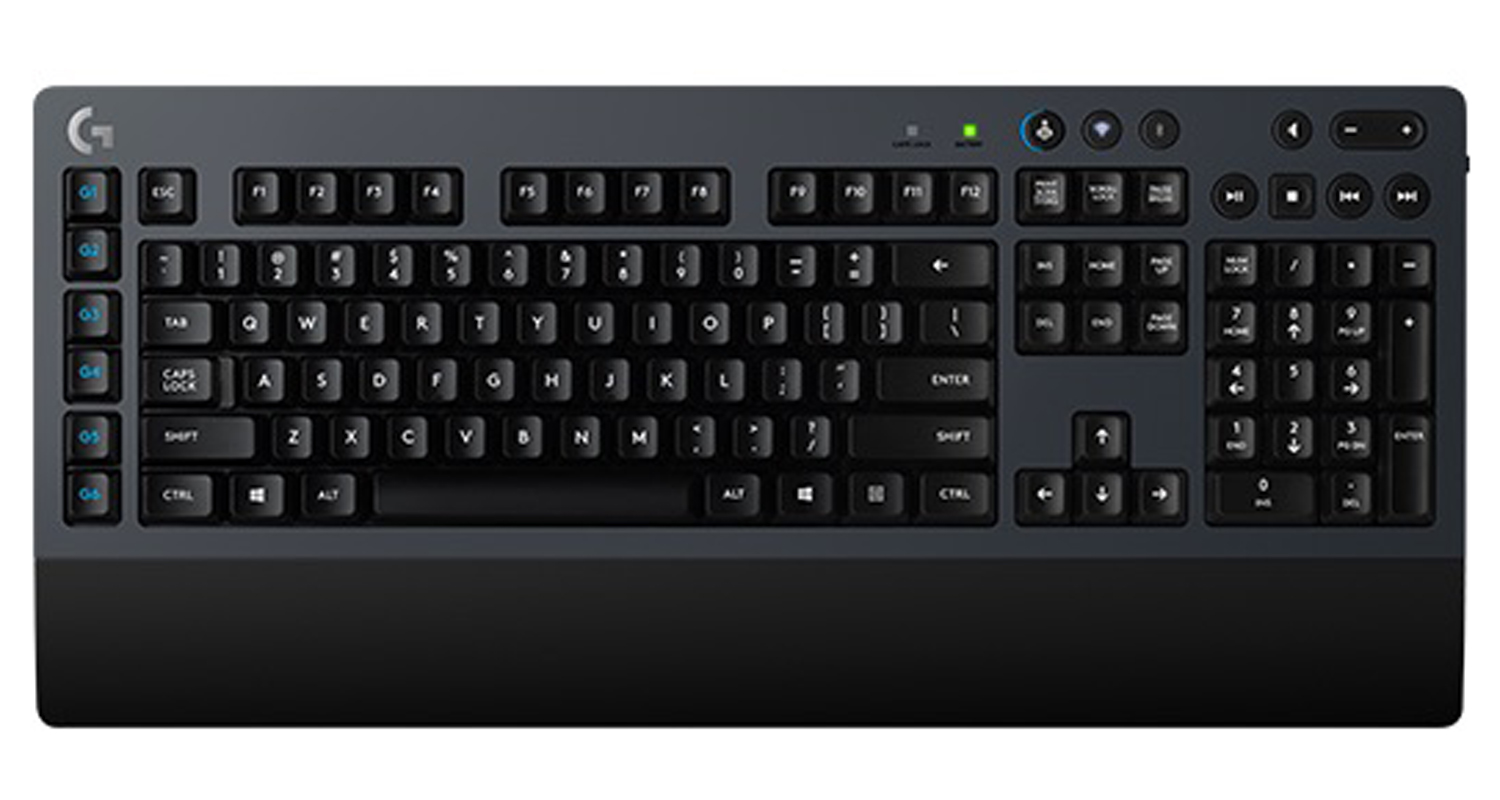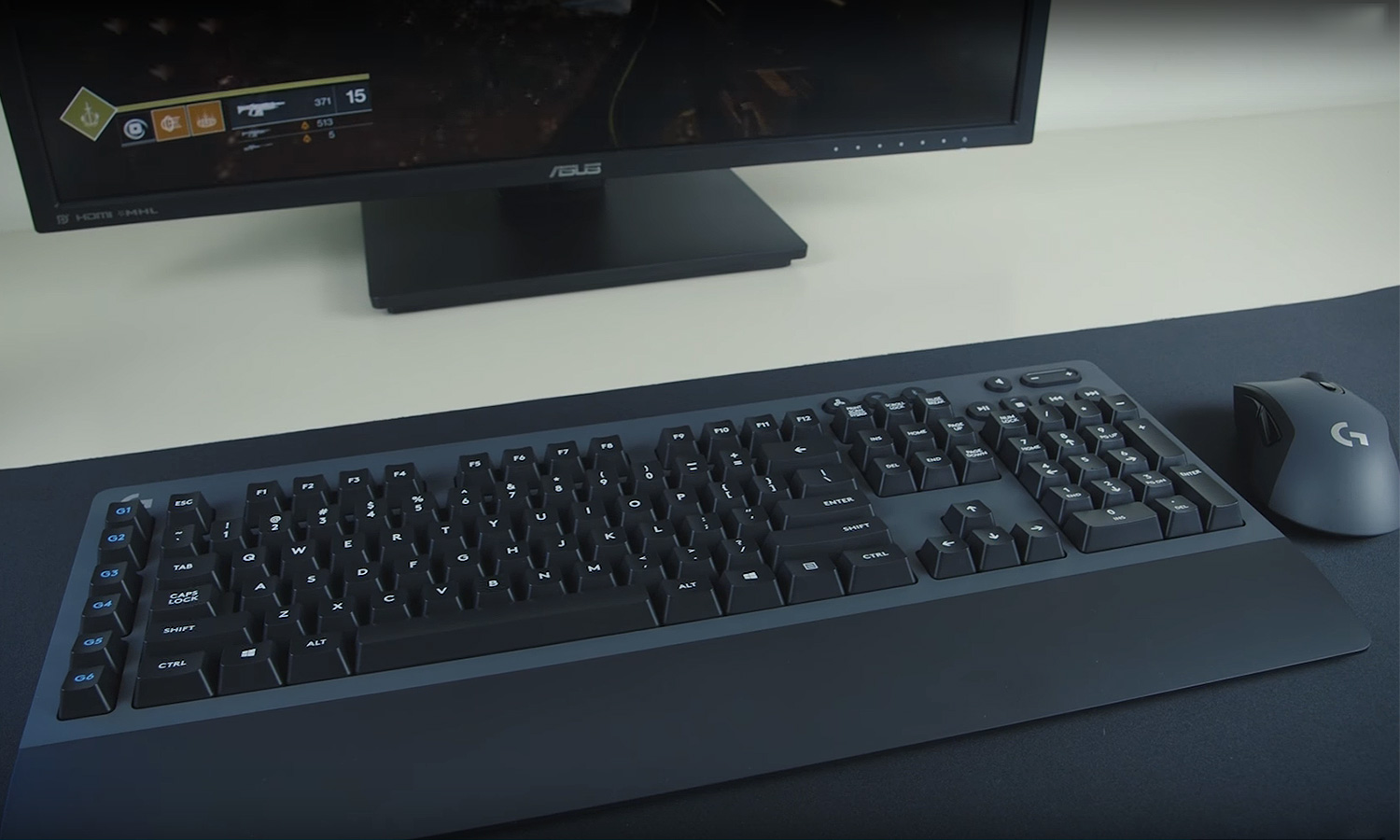Tom's Guide Verdict
The G613 is the very first wireless gaming keyboard from a major manufacturer, and it gets much more right than wrong.
Pros
- +
Great wireless functionality
- +
Good for both productivity and gaming
- +
First of its kind
Cons
- -
Bulky design
- -
Questionable extra keys
- -
No backlighting
Why you can trust Tom's Guide
It's no secret that I generally like Logitech gear. It's attractive, it's functional and it's built to last. Sometimes, it's even innovative. Take, for example, the Logitech G613 ($150). At first glance, it seems like a standard, full-size gaming keyboard. It's got mechanical keys, discrete media controls and a built-in wrist rest. In fact, it's missing only one major thing: a USB cord.
The G613 is the very first wireless gaming keyboard from a major manufacturer, and as such, it has a lot of expectations riding on it. Wireless headsets and mice were considered second-rate and unreliable just a few years ago; if the time has come for keyboards to cut the cord, they'll need to demonstrate that they're not only technically flawless, but also better-designed than their wired companions.
While the G613 succeeds on the first count, it doesn't quite go far enough on the second. In terms of pure functionality, Logitech has made better keyboards than this one. At the same time, if the G613 is supposed to demonstrate the viability of wireless gaming keyboards, it succeeds with flying colors.
Design
Whatever space the G613 saved by getting rid of the USB cord, it made up for with its overall design. Unlike Logitech's sleek G810 Orion Spectrum, the G613 has an extra row of macro keys and a huge wrist rest: The device measures 18.8 x 8.5 inches — 2 to 3 inches larger than its competitors on both sides. It's not a problem, per se, but if you don't need macro buttons or a wrist rest, those are the inconveniences you'll need to put up with to get a wireless gaming keyboard.
Beyond that, the keyboard looks plain, with a black-and-gray plastic chassis and white lettering on black keycaps. There's no backlighting, but there are discrete media buttons. (In what will easily be the most trivial complaint of this entire review, the volume has separate up-down buttons rather than a roller. What can I say; the G810 has spoiled me.)

While there's nothing really wrong with the G613, it feels like a "jack-of-all-trades, master of none" design. It's got a bunch of extra buttons and a spacious design, but if you don't need those things, you'll just need to wait for Logitech's next wireless keyboard. (Assuming there is one, and it's not dependent on the G613's success.)
Keys
The G613 makes use of Logitech's proprietary Romer-G mechanical switches. My feelings on them haven't changed much since they were first introduced — they're tactile and fairly quiet, like Cherry MX Browns, but not quite as comfortable. On the flip side, they're supposed to be more responsive and last longer, so the trade-off could be worthwhile.

For the most part, the G613 performed similarly to other Romer-G models. Using TypingTest.com, I scored 108 words per minute with seven errors on the G613, versus 107 words per minute with five errors on my regular G810; there's no meaningful difference between the two evaluations. However, there was some stiffness in the G613's spacebar that I couldn't quite shake.
I spent a morning using the G613 wirelessly from the couch, didn't encounter any lag or connectivity issues.
It's worth remembering that whatever else the G613's strengths or weaknesses, Romer-Gs are fairly high-end mechanical switches. Having them available in a wireless keyboard at all is a huge step forward.
Features
The G613 runs on the Logitech Gaming Software, which is versatile and easy-to-use, as usual. You can reprogram the extra column of G keys, as well as define parameters for the Game Mode (which disables certain keys during gameplay) and set up unique profiles for each game you play. Since there's no backlighting, setting up individual profiles isn't that vital, but if you use a lot of games that require different macros, it can be worthwhile.

Speaking of macros, giving users a whole column of extra keys but no way to record macros on the fly seems counterintuitive. The G613 doesn't advertise itself as a dedicated MMO keyboard, so it's not a deal breaker, but why give users a full column of extra keys if there's no real reason for them to be there? It's another symptom of the keyboard's unoptimized physical design, even though there's not much of a downside in its utility.

The biggest draw of the G613, as mentioned earlier, is the fact that it's totally wireless. My colleague Jorge Jimenez and I set up one of our office's conference rooms to mimic a traditional living room setup. We hooked up a PC to a big-screen TV, then put the keyboard about 10 feet away on top of a low desk. In addition to testing games, I did all my work there for a morning, and I didn't encounter any lag or connectivity issues.
The keys transmitted my commands immediately, whether I was leading Jim Raynor against a zerg swarm or taking down a giant with Geralt of Rivia's silver sword.
The G613 can connect via either a wireless dongle or Bluetooth —– or both, if you want to jump back and forth between typing on your computer and typing on your phone. The keyboard even comes with a cute little phone stand.

While I can't vouch for how the G613 might perform under tournament conditions, it stood up to everyday productivity and gaming demands without issue. The keyboard runs on two AA batteries, and Logitech estimates that the device can last for more than a year before you needing to replace them (provided you don't use it for more than eight hours a day and turn it off when it's not in use, anyway). There's no easy way to test that claim, but after a few days of heavy use, the keyboard was still absolutely nowhere near losing its charge.
Performance
With great wireless connectivity and high-quality key switches, there wasn't really any doubt in my mind that the G613 would handle games well. I put it through its paces with Overwatch, StarCraft: Remastered, The Witcher 3: Blood and Wine, and Marvel Heroes Omega, and found that it handled everything just as well as a comparable wired model. (Side note, though: If you connect a PC to a 4K TV, do whatever you can to reduce the input lag. It's noticeable.)
The keys transmitted my commands immediately, whether I was leading Jim Raynor against a zerg swarm, or taking down a giant with Geralt of Rivia's silver sword. My only concern is about games that require macros, as stated above, but if you want a full-size mechanical keyboard for a living room setup, the G613 is currently just about the only game in town.
Bottom Line
I'm of two minds about the Logitech G613. It's the necessary first step in what I hope will be a wireless keyboard revolution, and it works exactly as advertised. On the other hand, Logitech has built better keyboards than this, so the wireless convenience comes with a few trade-offs.

If you need a mechanical gaming keyboard for a living room setup, the Logitech G613 is the peripheral you've been waiting for. If wires aren't a concern, though, stick with the G810 and see what comes out within the next year or so. With any luck, the G613 is the beginning of a trend, not a one-off experiment.
Decided to go for the G613? Be sure to check out our Logitech G discount codes for all the latest ways to save on Logitech's fantastic range of gaming products.
Credit: Logitech
Marshall Honorof is a senior editor for Tom's Guide, overseeing the site's coverage of gaming hardware and software. He comes from a science writing background, having studied paleomammalogy, biological anthropology, and the history of science and technology. After hours, you can find him practicing taekwondo or doing deep dives on classic sci-fi.


